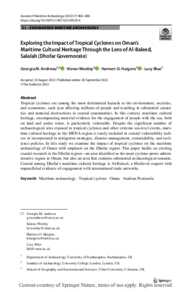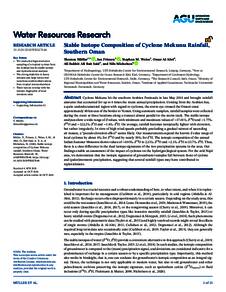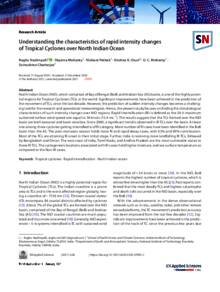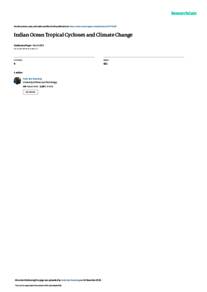Document
Exploring the impact of tropical cyclones on Oman’s maritime cultural heritage through the lens of Al-Baleed, Salalah (Dhofar governorate).
Identifier
DOI: 10.1007/s11457-022-09333-4
Source
Journal of Maritime Archaeology. v. 17, 3, p. 465-486
Contributors
Country
Germany.
City
Berlin
Publisher
Springer.
Gregorian
2022-09-01
Language
English
English abstract
Tropical cyclones are among the most detrimental hazards to the environment, societies, and economies, each year affecting millions of people and resulting in substantial casualties and material destructions in coastal communities. In this context, maritime cultural heritage, encompassing material evidence for the engagement of people with the sea, both on land and under water, is particularly vulnerable. Despite the significant number of archaeological sites exposed to tropical cyclones and other extreme sea-level events, maritime cultural heritage in the MENA region is rarely included in coastal vulnerability indices or incorporated in mitigation strategies, disaster management, sustainability, and resilience policies. In this study we examine the impact of tropical cyclones on the maritime archaeology of Oman with emphasis on the Dhofar region. This paper builds on existing coastal research in the Dhofar region—an area identified as the most cyclone-prone administrative region in Oman, but also an area that contains substantial archaeological remains. Central among Dhofar’s maritime cultural heritage is Al-Baleed, a Medieval seaport with unparalleled evidence of engagement with international trade networks.
ISSN
1557-2285
Category
Journal articles




